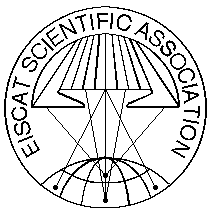
November 28 - December 02, 2011 - Namur, Belgium
Advances in GIC research and effects mitigation
| Session: | Session 3A: Advances in GIC Research and Effects Mitigation (03) |
| Type: | |
| Date: | Wednesday, November 30, 2011 |
| Time: | 09:00 - 12:30 |
| Chair: | Ellen Clarke & Ari Viljanen |
| Co-chair: | |
| Remarks: |
Splinter Wrap-up: 10:15-10:30 Coffee Break & Poster Session: 10:30-11:15 |
| Seq | Time | Title | Abs No | ||||
| 1 | 09:00 |
Space Weather Information needed for mitigating Damage in electric power Systems
Gaunt, Charles University of Cape Town, SOUTH AFRICA The nature of damage and disruption by geomagnetically induced currents (GICs) in electric power systems identifies the type of space weather parameters required to prepare mitigation guidelines and initiate actions when very severe disturbances occur. Economic and practical constraints on the scope of mitigation initiatives require a distinction between severe storms and extreme storms, and between statistical models and operational forecasts. The space weather data needs are linked directly to the requirements of the power system planners and operators. |
Invited | ||||
| 2 | 09:25 |
Gics and the Transmission Network in the UK
Richards, Andrew National Grid, UNITED KINGDOM National Grid is the Electricity System Operator for mainland Britain. We discuss the planning and modelling that National Grid has carried out to deal with the risk of significant disturbances from Space Weather and Geomagnetically Induced Currents. We also look at the operational mitigation strategies that National Grid has in place. |
Invited | ||||
| 3 | 09:50 |
Operation of the Finnish Power Transmission Grid during Gic-Events
Elovaara, Jarmo Fingrid Oyj, FINLAND Finland locates under the so called auroral zone, so that geomagnetically induced currents (GICs) during strong solar storms are probable in systems which are connecetd to the earth in Finland. The neutrals (star points) of star- ( or Y-) connected three-phase windings of the transformers used in the grid system are connected with the earth (directly or indirectly via an impedance) to reduce the stresses to the transformer and to reduce the cost of the transformer, too. From late 1970ies the company responsible for the power transmission in the 400 kV and 220 kV networks in Finland has recorded the magnitudes of the GICs induced in the power transfer system by measuring quasi-stationary direct currents flowing through the grounded neutral points of the system transformers. The highest current recordings (160-200 A DC and probably even higher) have been obtained in 1970ies-1990ies. Thereafter the structure of the grid has started to change (more meshes and shorter lines) and the power transfer capability of the lines has been increased by installing series capacitors on the longest overhead lines. This has effectively reduced also the magnitudes of the GICs. Even in the time when large GICs were recorded in Finland, they usually not caused any harm to the operation of the system. Only one case is known in Finland where a wrongly configured digital relay made an unnecessary tripping of a 220 kV tie line to Norway. After reconfiguration of the relay also this line has operated without troubles. It is important to notice that the Finnish 400 MVA system transformers have never experienced any thermal faults nor damages due to high direct current magnetization, although in some other countries like e.g. USA, South Africa and UK these have occurred. Also the principles and solutions adopted in case of reactive power compensation in Finland seem to be such that a voltage collapse and black-out in the grid has never occurred in Finland due to GICs. This mechanism has caused a major black-out in Hydro Quebec's 765 kV system in Canada but also in Sweden in Malmoe. Further, transformers saturated by the DC magnetization distort strongly the voltages and currents fed by the transformer. In spite of this the Finnish transformers or lines (omitting the single case of digital relay mentioned above) have never experienced trip-outs due to the presence of harmonics created by the GICs. The role of the harmonic interlocking feature of the relays cannot be underestimated in this. The paper gives an overview to the reasons why the Finnish experiences on the operation of the extra high voltage grid during GIC-conditions are so good. The main reason seems to be the selection of the power transformer type and the special dimensioning features of these transformers. It has to be confessed, that the first 220 and 400 kV system designers in 1950ies and in 1960ieswere also lucky, because GICs were not at all considered when the critical system design questions were solved and solutions were selected. The main design criterium has all the time been the electrical safety, i.e. the limiting of the magnitudes of the earth potential rise and the touch potentials during the short-circuits and earth faults. This has been the decisive factor, because the solid rock is very near the surface of the Earth in Finland causing that the average soil resistivity (at 50 Hz) is about 2300 Ωm. This requires the limiting of the fault currents, where the selection of the transformer type and the main characteristics of the transformer are very essential. The selected solution is different and more expensive than in most other countries, but it has been very effective, also in case of GICs. Moreover, the reactive power produced by overhead lines is compensated in Finland with a very simple and cheap solution which makes it possible to have enough reactors and a good reactive power balance in the system. Even a simultaneous saturation of several transformer due to GICs is not necessarily a severe thing in Finland. To study the properties of the Finnish system transformers the grid owner, Fingrid Oyj, has made DC-magnetization tests to two 400 MVA system transformers connected in no-load condition to the 400 kV grid. The DC fed in the neutral point of the 400 kV winding has reached 200 A. No excessive heating of the winding nor the structural parts of the transformer have been noticed during DC stresses lasting the same time as a typical GIC event . Remarkable dissolving of the oil to gas has not been found, either. The reactive power consumption of the transformers is known and the system can tolerate even a simultaneous saturation of several transformers (an unprobable event as such). |
Invited | ||||
| 4 | 11:15 |
Interim Results on Assessment of GIC for Canadian Power Grids
Trichtchenko, Larisa1; Boteler, David1; Pirjola, Risto2; Holt, David3 1Natural Resources Canada, CANADA; 2Finnish Meteorological Institute, FINLAND; 3University of Waterloo, CANADA
Impacts of the natural low-frequency electromagnetic fluctuations (geomagnetic storms) on power grids can be significant enough to cause equipment damage or even power blackouts. In order to prevent these damaging impacts, effective operating procedures should be planned based on assessments of the geomagnetically induced currents (GIC) in power grids and their interference with the essential equipment. |
Invited | ||||
| 5 | 11:35 |
Generation of 100-Year Geomagnetically induced current Scenarios
Pulkkinen, Antti1; Bernabeu, Emanuel2; Eichner, Jan3; Beggan, Ciaran4; Thomson, Alan4 1The Catholic University of America and NASA/GSFC, UNITED STATES; 2Dominion Power, UNITED STATES; 3Munich Re, GERMANY; 4BGS, UNITED KINGDOM The potential for severe societal consequences has been driving recent interest in extreme geomagnetic storm impacts particularly on high-voltage power transmissions systems. Although GPS-based timing of the transmission system operations can be impacted by space weather storms, it is generally understood that geomagnetically induced currents (GIC), causing half-cycle saturation of high-voltage power transformer are the leading mode for the most severe problems, such as electric blackouts and equipment damage. Consequently, characterization of extreme GIC events is central for quantifying the technological impacts and societal consequences of extreme space weather. A series of one hundred year extreme geoelectric field and geomagnetically induced current (GIC) scenarios are explored by taking into account the key geophysical factors associated with the geomagnetic induction process. More specifically, we derive explicit geoelectric field temporal profiles as a function of ground conductivity structures and geomagnetic latitudes. We also demonstrate how the extreme geoelectric field scenarios can be mapped into GIC. The computed extreme GIC scenarios are used to facilitate further engineering analyses that are needed to quantify the geomagnetic storm impact on conductor systems such as high-voltage power transmission systems. |
Invited | ||||
| 6 | 11:55 |
100 and 200 Year Geomagnetically Induced Current Event Simulations in the UK National Grid
Thomson, Alan; Beggan, Ciaran British Geological Survey, UNITED KINGDOM Electrical power grids suffer geomagnetically induced currents (GIC) during severe geomagnetic storms. These GIC can damage high voltage transformers, leading to loss of electrical power and 'knock on' disruption to the public and industry alike. Notable geomagnetic storms that have affected power grids around the world include the major events of March 1989 and October 2003. There is a close relationship between the magnitude of GIC in a grid and the time rate of change of the horizontal component of the geomagnetic field, dH/dt. Variations in H on time scales of the order of tens of seconds to tens of minutes are known to generate GIC. Magnetic observatories report one-minute (average) data from around the world, via the INTERMAGNET program, and these are therefore useful in studying the geomagnetic hazard to power systems. However global digital one-minute data only exist for at most two or three decades. So while we can study the recent geomagnetic record to better understand the impact on power systems, we know little of the possible impact of a 'one in a hundred years' or a 'one in two hundred years' storm. For example what would be the impact today on a typical European power grid of a repeat of the ‘Carrington Storm' of 1859? Using the technique of extreme value statistics and data from 29 European observatories, Thomson et al. (AGU Space Weather 2011, in press) estimate that across Europe horizontal field changes may peak at 4,000 nT/minute, in one magnetic storm, once every 100 years. For storm return periods of 200 years the equivalent figure is 6,000 nT/minute. In this presentation we show the potential impact of such extreme events on a model of the 410 kV and 275 kV UK power network. In particular we identify where the largest GIC would be expected. We use simulated plane waves of three different amplitudes (equivalent to 1000, 3000, 5000 nT/min), suggested by the Thomson et al. study, and different source field frequencies (2 and 10 minutes), to determine the instantaneous impact on a representative (if imperfect) model of the UK high-voltage power grid. North-south and east-west electrojet orientations, and linear superposition of these, are considered. Tens to hundreds of Amps of GIC are found to be typically produced in transformers towards the extremities of the grid. This compares with a measurement of 42 Amps at one location in the UK grid during the October 2003 storm. |
|||||
| 7 | 12:15 |
Solar Wind Shocks and magnetic Fields and Relation to local ground magnetic Field Fluctuations
Wintoft, Peter1; Wik, Magnus2 1Swedish Institute of Space Physics, SWEDEN; 2NeuroSpace, SWEDEN The upstream solar wind interacts with Earth's magnetosphere causing geomagnetic storms primary driven by shocks and the turning of the IMF. During these events the local magnetic field, measured at ground stations, show a large degree of fluctuation from the highest measured resolution (seconds) to several minutes. These fluctuations induce electrical currents (GIC) in power grids, where the level of GIC is also determined by the ground conductivity. During a past ESA study models, consisting of recurrent neural networks, were developed to predict the time derivate of the horizontal ground magnetic field at two locations using solar wind data from the ACE spacecraft. As part of the FP7 project EURISGIC these models should now be extended to cover Europe. In this work we analyse, in the light of the current models, in more detail the solar wind structures causing the relevant disturbances, especially on their timing and duration. |
|||||











